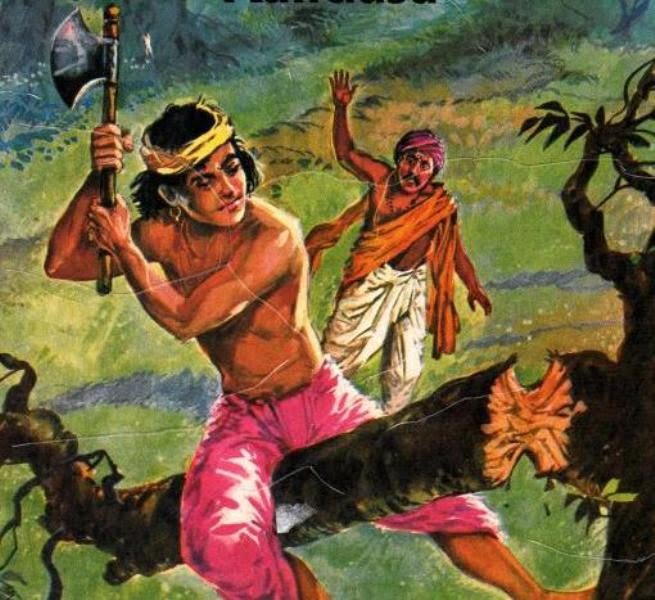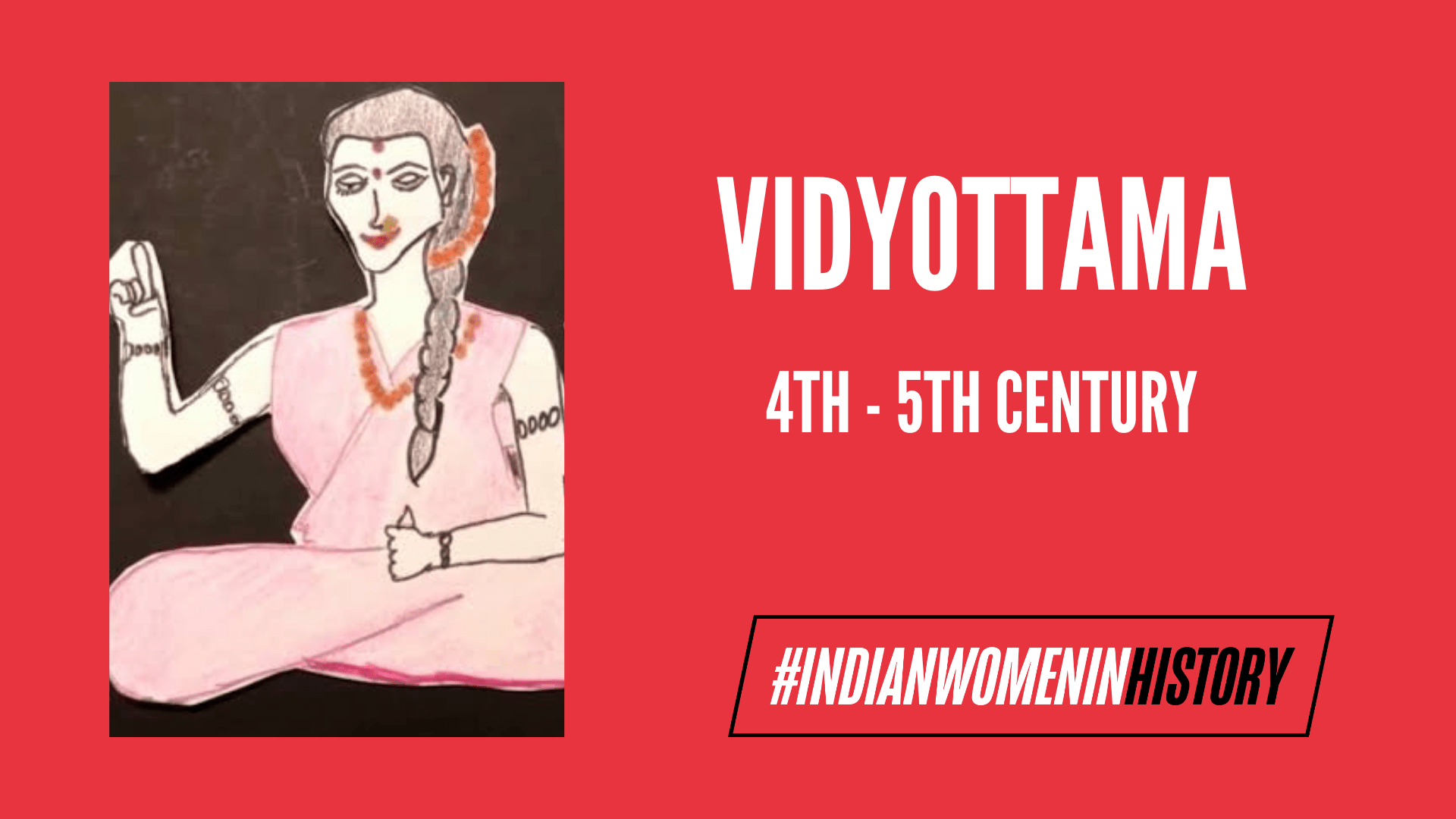Vidyottama is said to be one of the most intelligent and talented women of her era and yet, there is not sufficient historical information to shed proper light on her life.
Vidyottama is the enigmatic and learned wife of epic poet and playwright, Kalidasa. Often referred to as the “Shakespeare of India,” Kalidasa is one of the most renowned playwrights and poets of ancient India. While much is known about Kalidasa’s literary works, little is known about his personal life, including Vidyottama, his wife.
With few mentions in historic writings and literary works, Vidyottama continues to be an intriguing individual in history. There are no autobiographical narratives or in-depth records of Kalidasa’s personal life that have been left behind.
As a result, most of our knowledge about Vidyottama is hypothetical and relies on obscure references. One of the most popular accounts on Vidyottama is the story of her marriage to Kalidasa and this account is based on folklore and legends.
The legend of Vidyottama
Vidyottama was said to be the daughter of King Vikramaditya of Ujjain. One account of her story says that her parents gave her the name Gunamanjari (Garland of Virtues), and they chose Acharya Vararuchi to be her academic mentor. By the age of twelve, Gunamanjari had mastered everything her gurus had to teach her, and she was an expert in every discipline, including academics and the performing arts. She earned the name Vidyottama (She excels in all areas of learning) as a result.
Due to her extraordinary achievements, monarchs and princes from all over the nation desired her hand in marriage. However, King Vikramaditya decreed that no one could win her unless they could demonstrate that they were more intelligent than Vidyottama.
According to folklore and fables, Vidyottama had an inflated sense of pride and in addition to making light of all the wise men in her father’s court, she dared insult her teacher Vararuchi too. Infuriated by her irreverence, the wise men of the court decided to teach her a lesson in modesty by deceiving her into marrying a simpleton.
One day, the wise men came across a handsome man on their way to court. He was attempting to cut a branch of a tree from its base while perched on the tip of the same one. The men agreed that he was a great simpleton indeed. The man sitting on the branch was none other than Kalidasa. The wise men put him in fine clothes and instructed him not to utter a single word when presented in court.

The king received the marriage proposal from the wise men. They presented Kalidasa as a highly educated scholar who was observing a one-month maun-vrat (a vow of silence). Maun-vrat was a practice that many sages at the time engaged in since it was believed to promote purity of thought and speech. Both the young man’s beauty and the compliments from the wise men in his court captured the king’s attention.
Vidyottama, however, wasn’t going to be satisfied until she evaluated his knowledge. Vidyottama and Kalidasa agreed to engage in a debate in which they could only speak with gestures.
Vidyottama started the debate by indicating that there is only one supreme God with her index finger. Kalidasa thought the princess had threatened to poke him in the eye. He responded by pointing with two fingers so that he would poke both of her eyes. The court scholars intervened and informed Vidyottama that Kalidasa was actually answering her question by stating that there are two supreme powers, one of the two being God Himself and the other, the individual soul. She, then opened her palm to indicate how there are five senses.

Again, Kalidasa mistook it for the princess wanting to slap him and shows his closed fist as his response. The wise men interpret his answer and tell Vidyottama that mastery over the five senses is the only way to ultimate greatness.
Impressed with Kalidasa, Vidyottama decides to marry him. However, the princess soon discovers that her husband is an illiterate and a simpleton. After that, Kalidasa was either thrown out by the princess or left the palace on his own to gain knowledge. He is said to have been under the tutelage of numerous well-known teachers to become a learned scholar his wife could be proud of. Thus, the legend says that Kalidasa owes his life’s work to his wife since she was the one who set in motion his quest for knowledge.
A misrepresented villainess
It is noteworthy that history has no record of Vidyottama’s life and work unless it’s in association with her husband. Still, it is impossible to ignore Vidyottama’s potential impact on how Kalidasa portrayed women in his writings. It’s possible that the strong, independent, and intelligent women in Kalidasa’s works are representations of the qualities he liked in his wife. One could only speculate as to whether Vidyottama was a direct inspiration for these portrayals or whether her presence in Kalidasa’s life had a secondary impact.
Aside from her potential influence on Kalidasa’s writing, her story has turned into a cautionary tale against too much arrogance. It’s meant to teach a modern woman how despite her being one of the most intelligent and talented women of her era, she could never outshine a man. If she did, she would be taught a lesson, just like Vidyottama was.
Aside from her potential influence on Kalidasa’s writing, her story has turned into a cautionary tale against too much arrogance. It’s meant to teach a modern woman how despite her being one of the most intelligent and talented women of her era, she could never outshine a man. If she did, she would be taught a lesson, just like Vidyottama was.
Going through the different accounts of her legend, one can’t help but contemplate the possibility that the ‘wise men,’ in her father’s court simply couldn’t stand being bested by a woman and hence, conspired to put her in her place through any means.
This idea of ‘putting a woman in her place,’ in that period is very disturbing since the Gupta period is lauded as a ‘golden period,’ where women enjoyed the same rights as men. If nothing else, Vidyottama’s tale seems to easily disprove that theory.
While early Indian society seemed to have understood the need for educating women (which largely only consisted of upper-caste and upper-class Hindu women) and women’s participation in societal matters, there was still an increased emphasis on getting married and bearing children. Thus, despite being a learned scholar and a noblewoman, Vidyottama still did not enjoy the same privileges as the men of her era did.
The portrayal of Vidyottama as a villain for insulting ‘great men‘ and scorning her husband because he was illiterate is misrepresented, to say the least. The tale of Vidyottama has been re-imagined and re-interpreted by several modern feminists to do her story justice.

Meera Kant’s, Heard, But Never Seen is one such re-imagining where Kalidasa recalls his wife in his dying moments and her character is given a voice in the play. In her introduction to the play, Kant writes, “Vidyottama was deceived twice in her life due to her superior intelligence: the first when she was married to an idiot Kalidasa and the next when her husband treated her as a teacher and denied her nuptial rights. Why is it that a woman can (only) be either brains or body? The delicate body or the formless divinity! Why can’t the society perceive her in her entirety?”
The mysteries surrounding Vidyottama may never be completely resolved, but her existence serves as a reminder of the often-overlooked contributions and influences of women throughout history, particularly in the fields of literature and the arts.
Whether as a historical individual or as a symbol of the ideal woman in Kalidasa’s imagination, Vidyottama acts as a reminder of the complex and multifaceted role that women have played in influencing the cultural and creative landscape of ancient India and beyond.
About the author(s)
Sharanya Gopalakrishnan is a recently graduated journalism student from Flame University. She
loves reading and watching cringe TV shows. She hopes to publish her own novel someday.





